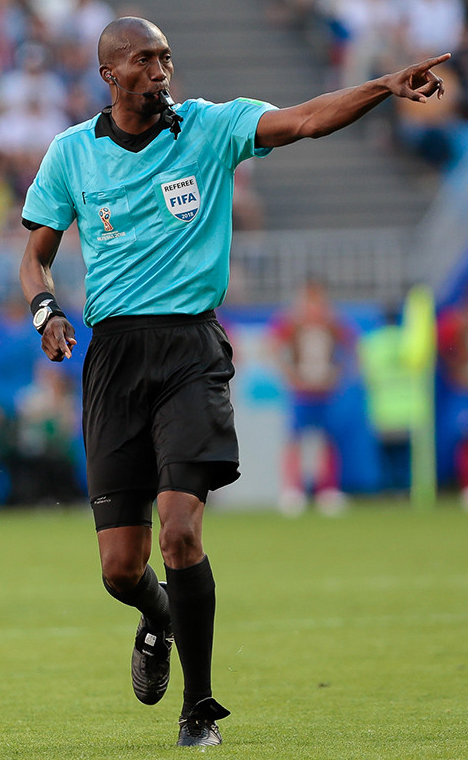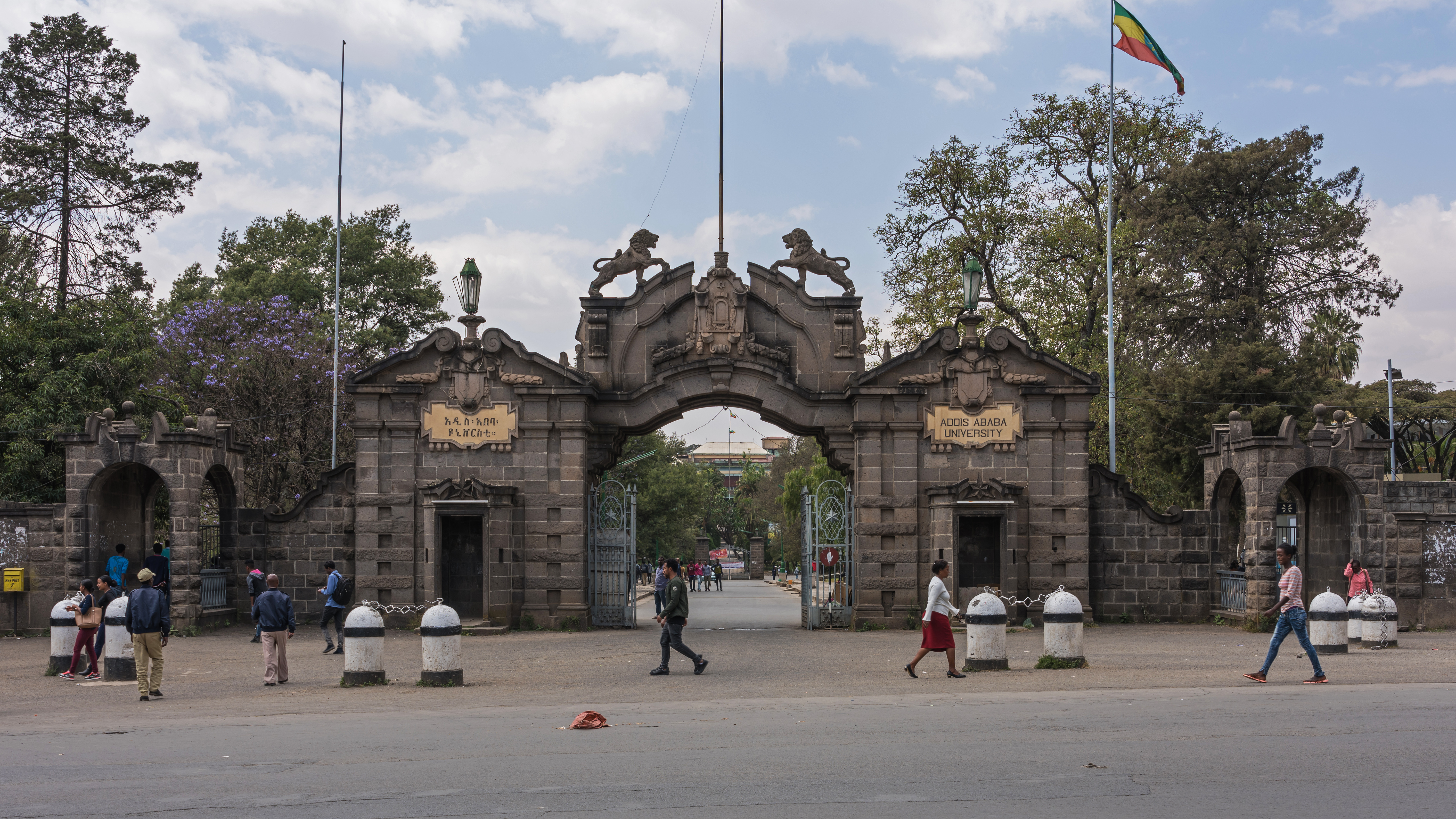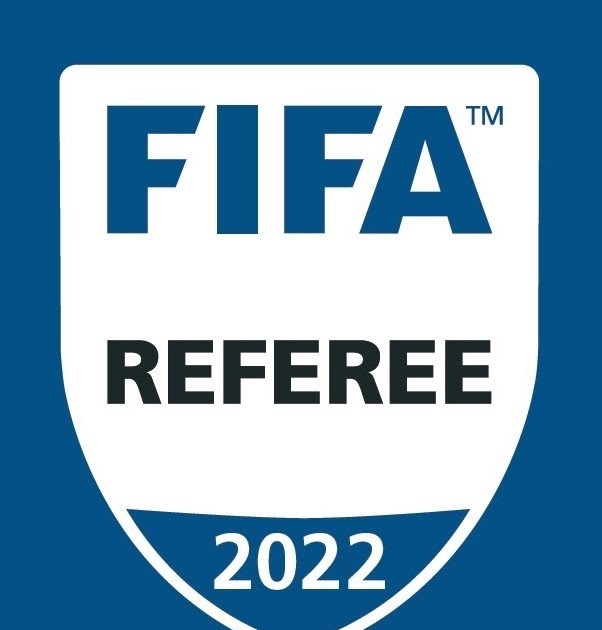|
Tessema Bamlak
Bamlak Tessema Weyesa (born 30 December 1980) is an Ethiopian football referee. He is also a medical researcher, a clinical coordinator and a sociology graduate (2012) from Addis Ababa University. He started to referee in 2003 and became international FIFA in 2009 with Djibouti vs Somalia in 2010 as his first international match. He has been very active during CECAFA Cup 2010 where he officiated 5 matches including the Final between Tanzania and Ivory Coast and CECAFA Cup 2011 (4 matches). In 2012 he was also appointed for one Champions League match in Tanzania (1st round), and one CAF Confederation Cup in Egypt (2nd round). He became a FIFA referee in 2009. He has served as a referee at the 2014 FIFA World Cup qualifiers The 2014 FIFA World Cup qualification was a series of tournaments organised by the six FIFA confederations. The 2014 FIFA World Cup featured 32 teams, with one place reserved for the host nation, Brazil. The remaining 31 places were determined by ..., beg ... [...More Info...] [...Related Items...] OR: [Wikipedia] [Google] [Baidu] |
Addis Ababa
Addis Ababa (; am, አዲስ አበባ, , new flower ; also known as , lit. "natural spring" in Oromo), is the capital and largest city of Ethiopia. It is also served as major administrative center of the Oromia Region. In the 2007 census, the city's population was estimated to be 2,739,551 inhabitants. Addis Ababa is a highly developed and important cultural, artistic, financial and administrative centre of Ethiopia. Addis Ababa was portrayed in the 15th century as a fortified location called "Barara" that housed the emperors of Ethiopia at the time. Prior to Emperor Dawit II, Barara was completely destroyed during the Ethiopian–Adal War and Oromo expansions. The founding history of Addis Ababa dates back in late 19th-century by Menelik II, Negus of Shewa, in 1886 after finding Mount Entoto unpleasant two years prior. At the time, the city was a resort town; its large mineral spring abundance attracted nobilities of the empire, led them to establish permanent settlement ... [...More Info...] [...Related Items...] OR: [Wikipedia] [Google] [Baidu] |
FIFA International Referees List
The FIFA International Referees List is an annual publication of the global list of FIFA international referees in the football-variants controlled by the International Federation of Association Football (FIFA) – association football (outdoor football), futsal and beach soccer Beach soccer, also known as beach football, sand football or beasal, is a variant of association football played on a beach or some form of sand. Whilst football has been played informally on beaches, the introduction of ''beach soccer'' was an a .... Members of the list are qualified to officiate at international level and are entitled to wear a FIFA badge on their uniform for the year in which they listed. Nomination FIFA member countries are invited annually to nominate male and female officials for association football, futsal and beach soccer. Each country's Referee's Committee selects the referees to be nominated to FIFA. FIFA maintains five lists in total: men's and women's association football ... [...More Info...] [...Related Items...] OR: [Wikipedia] [Google] [Baidu] |
Association Football
Association football, more commonly known as football or soccer, is a team sport played between two teams of 11 players who primarily use their feet to propel the ball around a rectangular field called a pitch. The objective of the game is to score more goals than the opposition by moving the ball beyond the goal line into a rectangular framed goal defended by the opposing side. Traditionally, the game has been played over two 45 minute halves, for a total match time of 90 minutes. With an estimated 250 million players active in over 200 countries, it is considered the world's most popular sport. The game of association football is played in accordance with the Laws of the Game, a set of rules that has been in effect since 1863 with the International Football Association Board (IFAB) maintaining them since 1886. The game is played with a football that is in circumference. The two teams compete to get the ball into the other team's goal (between the posts and under t ... [...More Info...] [...Related Items...] OR: [Wikipedia] [Google] [Baidu] |
Referee (association Football)
In association football, the referee is the person responsible for interpreting and enforcing the Laws of the Game during a match. The referee is the final decision-making authority on all facts connected with play, and is the match official with the authority to start and stop play and impose disciplinary action against players and coaches during a match. At most levels of play the referee is assisted by two assistant referees (formerly known as linesmen), who advise the referee on whether the ball leaves the playing area and any infringements of the Laws of the Game occurring outside of the view of the referee. The final decision on any decision of fact rests with the referee who has authority to overrule an assistant referee. At higher levels of play the referee may also be assisted by a fourth official who supervises the teams' technical areas and assists the referee with administrative tasks, and, at the very highest levels, additional assistant referees and/or video ... [...More Info...] [...Related Items...] OR: [Wikipedia] [Google] [Baidu] |
Addis Ababa University
Addis Ababa University (AAU) ( am, አዲስ አበባ ዩኒቨርሲቲ) is a national university located in Addis Ababa, Ethiopia. It is the oldest university in Ethiopia. AAU has thirteen campuses. Twelve of these are situated in Addis Ababa, and one is located in Bishoftu, about away. AAU has several associated research institutions including the Institute of Ethiopian Studies. The Ministry of Education admits qualified students to AAU based on their score on the Ethiopian University Entrance Examination (EUEE). History The origins of AAU was a two-year college in 1950 by the Jesuit Lucien Matte, at the appeal of ''His Majesty Emperor'' Haile Selassie I. It began operations the following year. Over the following two years an affiliation with the University of London, and University of Oxford was developed. Africans from various parts of the continent would receive free scholarships through programs subsidized by the Organisation of African Unity for higher learning. AAU ... [...More Info...] [...Related Items...] OR: [Wikipedia] [Google] [Baidu] |
FIFA
FIFA (; stands for ''Fédération Internationale de Football Association'' ( French), meaning International Association Football Federation ) is the international governing body of association football, beach football and futsal. It was founded in 1904 to oversee international competition among the national associations of Belgium, Denmark, France, Germany, the Netherlands, Spain, Sweden and Switzerland. Headquartered in Zürich, Switzerland, its membership now comprises 211 national associations. These national associations must each also be members of one of the six regional confederations into which the world is divided: CAF (Africa), AFC (Asia and Australia), UEFA (Europe), CONCACAF (North & Central America and the Caribbean), OFC (Oceania) and CONMEBOL (South America). FIFA outlines a number of objectives in the organizational Statutes, including growing association football internationally, providing efforts to ensure it is accessible to everyone, and advocating for ... [...More Info...] [...Related Items...] OR: [Wikipedia] [Google] [Baidu] |
2014 FIFA World Cup Qualification – CAF Second Round
This page provides the summaries of the CAF Second Round matches for 2014 FIFA World Cup qualification. Format The second round saw the top 28 ranked CAF teams joined by the 12 winners from the first round. These teams were drawn into ten groups of four teams, at the World Cup Preliminary Draw at the Marina da Glória in Rio de Janeiro, Brazil on 30 July 2011. The matches were played from 1 June 2012 to 10 September 2013. The winners of each group advanced to the third round. Seeding The July 2011 FIFA World Ranking was used to seed the teams. † First round winners whose identity was not known at the time of the draw Groups Note: Scores marked by * are results awarded by FIFA. Group A ---- ---- ---- ---- ---- Group B ---- ---- ---- ---- ---- Group C ---- ---- ---- ---- ---- Group D ---- ---- ---- ---- ---- Group E ---- ---- ---- ---- ---- Group F ---- ---- ---- ---- ---- Group G ... [...More Info...] [...Related Items...] OR: [Wikipedia] [Google] [Baidu] |
Djibouti National Football Team
The Djibouti national football team, nicknamed the ''Riverains de la Mer Rouge'' ("Shoremen of the Red Sea"), is the national football team of Djibouti. It is controlled by the Djiboutian Football Federation, and is a member of the Confederation of African Football (CAF) and the Union of Arab Football Associations (UAFA). The Djibouti national football team's first win in a full FIFA-sanctioned international match was a 1–0 win vs. Somalia in the first round of the 2010 FIFA World Cup qualification. History French Somaliland (1947–1960) Djibouti played its first international match under the name ''French Somaliland'', at home against neighbouring Ethiopia on 5 December 1947 and lost 5–0. This was also Ethiopia's debut. The two played again in Djibouti on 1 June 1948 and Ethiopia won 2–1. On 1 May 1949, the fixture was played for the ''Emperor Cup'' in Ethiopia, and the host won 6–0. In 1954, Djibouti played Ethiopia three times: a 10–2 away loss on 1 May, ... [...More Info...] [...Related Items...] OR: [Wikipedia] [Google] [Baidu] |
Namibia National Football Team
The Namibia national football team represents Namibia in men's international football and is controlled by the Namibia Football Association. They have never qualified for the FIFA World Cup but have made three appearances in the Africa Cup of Nations. The team represents both FIFA and Confederation of African Football (CAF). History Namibia played its first international under the name South-West Africa on 16 May 1989 at home against neighbouring Angola and lost 1–0. On 23 March 1990, only two days after gaining independence from South Africa, they hosted neighbour Zimbabwe and lost 5–1. On 7 June, they lost a home friendly 2–1 to Mauritius. Namibia's next contests were played in Lesotho, where they lost 2–0 to their hosts on 1 August 1992, but gained their first ever draw in a 2–2 tie against the same opposition the very next day. Namibia's first win came on 1 July 1994 in a 1–0 victory away over Botswana in a friendly. On 17 May 1998, Namibia played their first ma ... [...More Info...] [...Related Items...] OR: [Wikipedia] [Google] [Baidu] |
List Of Football Referees
This is a list of current FIFA international referees. Years in brackets indicate when the referee was added to the FIFA International Referees List. Afghanistan Men's Referees * Halim Shirzad (2019) Assistant Referees * Nangyali Sadat (2017) * Mohd. Sharif Sarwari (2015) Video Match Officials ''None'' Futsal Referees * Mohammad Tamim Hussaini (2018) Beach Soccer Referees * Zainudin Sharifi (2015) Women's Referees * Yasmin Haidari (2015) Assistant Referees * Farishta Shaikhmiri (2019) Video Match Officials ''None'' Futsal Referees ''None'' Beach Soccer Referees ''None'' Albania Men's Referees * Eldorjan Hamiti (2018) * Enea Jorgji (2011) * Juxhin Xhaja (2018) Assistant Referees * Rejdi Avdo (2006) * Nertil Bregasi (2019) * Ridiger Cokaj (2002) * Dojando Myftari (2019) * Denis Rexha (2014) * Ilir Tartaraj (2013) Video Match Officials ''None'' Futsal Referees * Arlind Subashi (2021) Beach Soccer Re ... [...More Info...] [...Related Items...] OR: [Wikipedia] [Google] [Baidu] |
Ethiopian Football Referees
Ethiopians are the native inhabitants of Ethiopia, as well as the global diaspora of Ethiopia. Ethiopians constitute several component ethnic groups, many of which are closely related to ethnic groups in neighboring Eritrea and other parts of the Horn of Africa. The first documented use of the name "Ethiopia" from Greek name "Αἰθίοψ" (Ethiopian) was in the 4th century during the reign of Aksumite king Ezana. There were three ethnolinguistic groups in the Kingdom of Aksum; Semitic, Cushitic, and Nilo-Saharan (ancestors of the modern-day Kunama and Nara). The Kingdom of Aksum remained a geopolitically influential entity until the pillage of its capital — also named Axum — in the 10th century by Queen Gudit. Nevertheless, the core Aksumite civilization was preserved and continued into the successive Zagwe dynasty. By this time, new ethnic groups emerged – the Tigrayans and Amharas. During the Solomonic period, the latter established major political and cultural in ... [...More Info...] [...Related Items...] OR: [Wikipedia] [Google] [Baidu] |
Living People
Related categories * :Year of birth missing (living people) / :Year of birth unknown * :Date of birth missing (living people) / :Date of birth unknown * :Place of birth missing (living people) / :Place of birth unknown * :Year of death missing / :Year of death unknown * :Date of death missing / :Date of death unknown * :Place of death missing / :Place of death unknown * :Missing middle or first names See also * :Dead people * :Template:L, which generates this category or death years, and birth year and sort keys. : {{DEFAULTSORT:Living people 21st-century people People by status ... [...More Info...] [...Related Items...] OR: [Wikipedia] [Google] [Baidu] |






